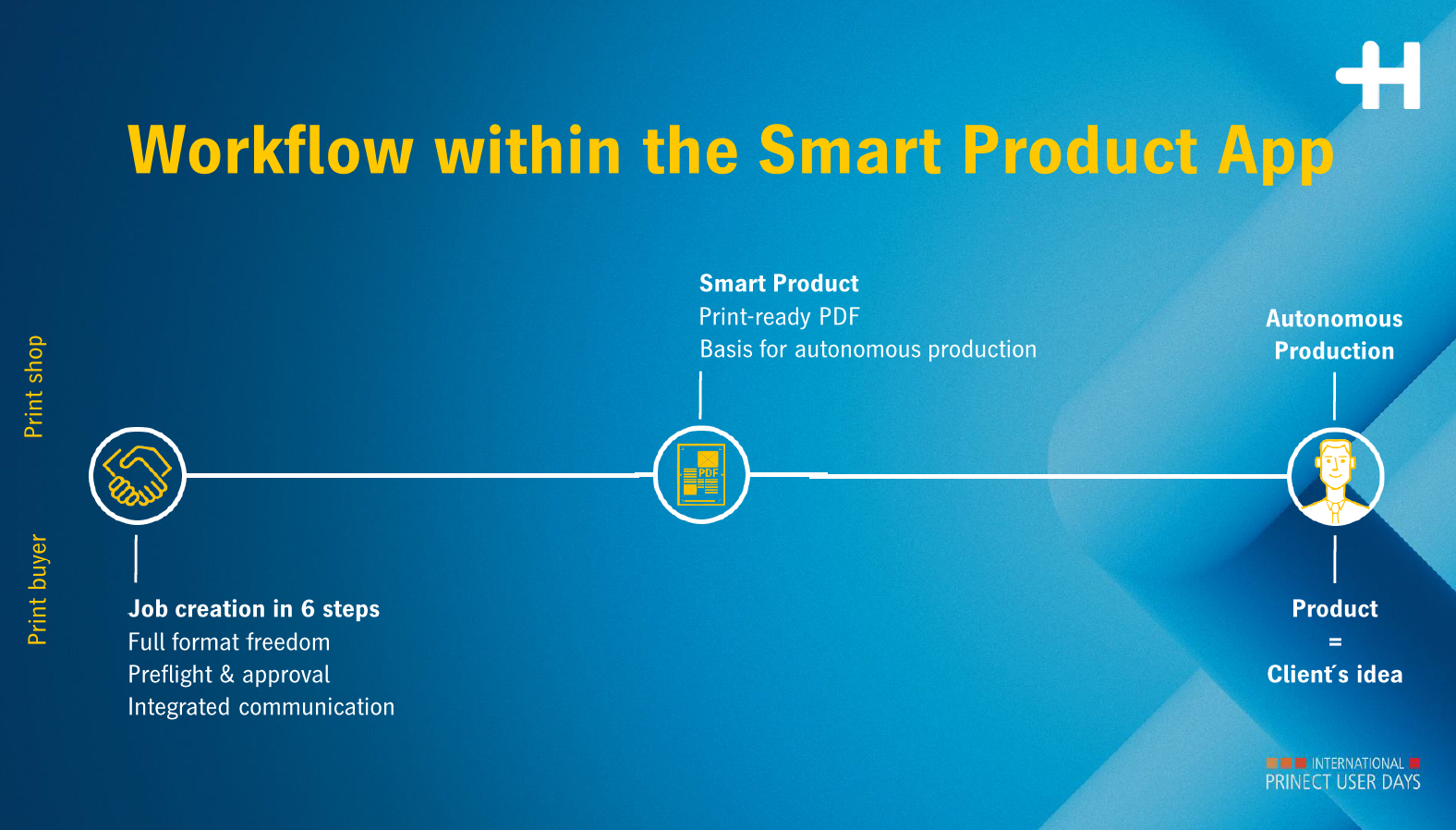The announcement came ahead of Heidelberg’s Prinect User Days in-person and online event, to be held next week.
Christopher Berti, head of software solutions, described it as “a major technological shift” and said Prinect was “our strongest USP”.
He said that since switching to a subscription model four years ago, Prinect had seen a 10% growth rate and there were now some 3,500 subscription customers worldwide, with “no negative impact” on the product in the past two Covid years.
Axel Zöller, head of commercial software, said Prinect Direct was a completely new, cloud-based software and workflow development.
“The one target is the autonomous printing, that is the principle of development, with far reduced touchpoints compared with today,” he said.
Heidelberg first unveiled its ‘Push to Stop’ autonomous printing press technology at Drupa 2016, and the latest developments build upon that vision.
The first six apps in the “Prinect Direct universe” include the Smart Product app, described as the most important, which allows users to set up completely autonomous production for offset and digital printing.
“Order admin, and even the print buyer can set up the job. For the first time we are enabling totally different collaboration opportunities between the print buyer and the print shop,” Zöller stated.
It includes ‘product intent’ information detailing exactly what the end product is supposed to be, which is aimed at avoiding late-stage issues with jobs.
“Uniquely we are integrating PDF verification against the product intent, yet still encouraging creativity and diversity in design and production because that’s where the added-value is,” he explained, and said the system could “reduce or eliminate correction cycles – pre-press basically goes away”.
Smart Product involves just six steps to create a print-ready PDF.
“The final product triggers a completely automated production in pre-press to either platemaking or digital printing. No manual decisions are needed about how that is supposed to be produced.
“Print buyers can set up the job themselves. The pre-press department can focus on complex jobs.”
Initial options through Smart Product are single- or double-sided items with other more complex products to follow as the system develops.
Heidelberg likened the print buyer aspect to how consumers are now able to carry out previously complex processes such as booking airline flights themselves, via a browser interface.
 Smart Product's simplified workflow
Smart Product's simplified workflow
Zöller also said that integrations that would have involved at least 189 lines of code could, with Smart Product apps, take just five lines of code, or 37 for integrations such as MIS systems.
“JDF was so damn complicated only a few companies did that. It will become easier to work with this product code.”
Prinect Direct works with Prinect Product Manager, which Heidelberg emphasised continued to be developed.
The manufacturer will aim to find concept customers to trial the new product at the upcoming User Days event. Commercially availability is slated for Q4.
Zöller said that online web-to-print firms that have already invested heavily in their own online ordering systems were not the primary target market.
“The target is the several thousand printers worldwide who do not have that sort of setup,” he noted.
Heidelberg expects there to be 70-80 apps eventually, and is looking at a timeline of several years to achieve the full functionality and integration envisioned.
Prinect Direct sits within the Heidelberg Plus cloud-based customer portal and ecosystem of apps and integrations, which has been extended and will also be shown at next week’s event, with new icons to illustrate the expansion of connectivity.
Heidelberg billed it as “the whole printshop in one portal”. It announced its first cloud-based app, Prinect Analytics, last autumn.
Heidelberg Plus now encompasses the Prinect Apps, Heidelberg’s eShop, Service Apps, and the Zaikio procurement and connectivity platform.
Claudia Jung, head of digital ecosystem, said customer requirements were driving the developments: “We are now adding upstream and downstream processes, and the key to this is digitisation.
“Industries and companies able to implement automation have immense competitive advantage. It’s the right time for the printing industry to take the next steps.”
Customers that for operational reasons cannot use shared cloud services, such as security printers, can opt for a private cloud.
Jung added: “We will cover all processes with a complete end-to-end workflow from pre-press to press including MIS. The cloud technology will take a company’s degree of openness and integration to a completely new level.”
Heidelberg said that one of the biggest demands from customers was integration of third-party products.
The Heidelberg Plus Prinect apps are connected to the on-premise Prinect Production Manager system. This is then connected to equipment that could be from Heidelberg or third parties, and extending into post-press devices.
“It could be a Heidelberg press, it could be a partner such as Ricoh or Masterwork… it might even be the competition,” explained Berti.
The goal is to dramatically speed up the sort of integrations that would currently take many months to achieve.
Heidelberg has already started a pilot phase with competitor Esko’s packaging workflow.
“We integrated Esko into Connect, and we made it that this is a plug-and-play solutions and you have all the Push to Stop options on the printing press by using Esko from June onwards.”
Some 300 customers are expected to attend the Prinect User Days in person, and Heidelberg will broadcast the event online for the first time.
There will be live broadcasts (morning and afternoon) on 19 May, in English, covering a range of topics including Heidelberg’s cloud strategy, and the first publishing showing of the Smart Product app.
More information and registration details here.











